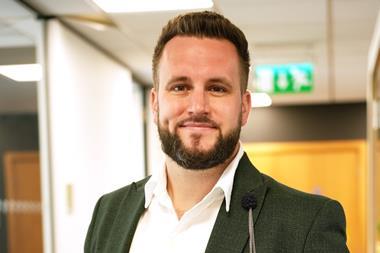Andrew Holt reveals why experts believe traditional anti-fraud methods are red herrings
Fraud, and how it should be tackled, is a constant source of industry debate. The latest addition to this ongoing argument is that the insurance industry's traditional methods of identifying likely fraudsters should be called into question.
Recent findings by fraud solutions provider Absolute Customer Management state that traditional identification methods are discriminatory, do not work, and cost the industry millions to boot.
The method known as 'red-flagging' is used by leading insurers to determine the likelihood of a claimant being dishonest. Issues such as race, age, gender and the area in which a claimant lives could all affect the likelihood of a claim being paid.
Consequently young men, especially those from deprived areas or of an ethnic minority background, are often discriminatingly identified as a high risk, says the report.
Absolute contends this approach. After managing claims across a series of books on behalf of various insurers, it has found that the average fraudster is far more likely to be white, middle-aged and middle class.
This statement was supported by an ABI report on fraud earlier this year. ABI senior economist Alex Roy says: "The perception used to be that insurance fraudsters lived in tower blocks. But our research shows that it is middle-aged, middle class and university-educated home-owners who are more inclined to commit fraud."
This view flies in the face of recent reports in the mainstream media, which put the blame for fraud at the door of illegal immigrants.
Gabrielle Stewart, a director at Absolute, says the picture is more complex. "We have found that in every section of society there is a percentage that will commit insurance fraud.
"The vast majority of insurance fraud is opportunistic; people exaggerating a genuine claim, or lying about circumstances that may make a policy invalid."
For example, Absolute says there are many cases where a claimant's car is stolen after leaving the keys in the ignition. As this event is excluded from insurance policies, claimants cite various spurious circumstances to support the payment of the claim.
Worrying proposition
Stewart says: "Although understandable, this is fraud. This type of claim often comes from middle-aged professionals, not traditionally thought of as fraudsters."
And with household claims the picture is different than otherwise presented. "Fraudulent claims have been presented almost equally from men and women, once again dispelling industry assumptions that fraud is a male-dominated activity," she adds.
As with most of these reports there is the usual worrying proposition for the industry from an economic perspective. Stewart estimates that the industry is losing millions of pounds a year by refusing to abandon these "outdated" identification methods.
So if this is correct, what is the alternative to red-flagging?
Stewart believes that a technique known as "cognitive interviewing" is the answer.
This technique focuses on claimants telling their story of the claim and the interviewer looking for them to trip themselves up when telling their story. It is a method used by the police. Stewart says: "Bumping up genuine claims is a common form of fraud and almost impossible to detect by the average call-centre worker.
"Cognitive interviewing allows case managers to detect both honest and dishonest statements in an emphatic, non-aggressive way. Using this technique the company has not only found that profiling people to determine the likelihood of fraud is futile, but that the level of fraud has been vastly underestimated."
Less evidence
But the government is to go ahead with plans to use lie detectors to combat benefit fraud. Anti-fraud minister James Plaskitt has said he will look at using voice risk software (otherwise known as lie detectors) as the solution to beat the fraudsters.
Bill Trueman, a director of Absolute, says this is the wrong approach.
"Voice risk software records stress rather than truth. The overall process does not look to the real evidence. There is also a problem of lack of investigative follow-up with this method, meaning that there is less evidence available should the claimant ever challenge a non-payment.
"Cognitive interviewing, by contrast, obtains accurate information by using psychological techniques to encourage memory recall resulting, where needed, in a fuller investigation and more effective fraud detection system, with true claimants being paid quicker."
Trueman says the private sector is perfectly placed to assist the public sector with fraud management using a variety of methods that are already in operation, particularly in the area of strategic data-sharing solutions.
"The government needs to bite the bullet to overcome both legal and IT system issues and to start investing in a joined-up anti-fraud infrastructure. Setting up a central agency to work towards this aim would be a useful start," he concludes.
How fraud should be dealt with is highly relevant, given that in the UK business community it costs at least £550m a year, according to a study commissioned by the ABI and a number of leading insurance players.
Anything that can assist in reducing such a figure is surely an option to be considered. IT
Hosted by comedian and actor Tom Allen, 34 Gold, 23 Silver and 22 Bronze awards were handed out across an amazing 34 categories recognising brilliance and innovation right across the breadth of UK general insurance.











































